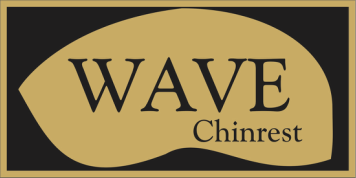African Padauk Wood
The traditional woods for fittings have issues with cost and sustainability. In our search for appropriate substitutes, we have come across a truly outstanding tonal wood: African Padauk. Long used in African musical instruments, and sought-after by guitar makers as tonewood, it produces a superior sound, often enhancing the tone of the instrument, even when compared to using no chinrest at all. Giving a complexity, depth, and richness to the sound, Padauk brings a remarkable sonority to any instrument.
Traditionally, chinrests have been made out of three different woods: boxwood, east indian rosewood, and gabon ebony. Each of these, though, presents problems.
These woods are beautiful and highly prized; they are also perfect for stringed instrument fittings, due to their extreme hardness, allowing for peg durability and enhanced resonance. However, their numbers have suffered greatly, as we have literally "loved them to death", harvesting them past the point of sustainability. East Indian Rosewood is listed as "Vulnerable" on the IUCN Red List, and Gabon Ebony is listed as "Endangered" on the IUCN Red List, and is on the CITES list of vulnerable species (check here for an explanation of the organizations and terms). Boxwood, while not threatened, is quite expensive and difficult to obtain. Also, to achieve its brown color, it undergoes "fuming"; burning it with nitric acid fumes, then with ammonia fumes. This procedure is extremely hazardous and can result in severe injury. Due to their threatened sustainability and danger in production, we have looked to other materials.
Experiments with Padauk yielded surprising results. Conventional wisdom holds that any object placed onto an instrument, such as a chin- or shoulder- rest, should diminish its tone and lead to a deadening of its sound. Interestingly, trials have shown that a Padauk chinrest often actually enhances the instrument's tone, giving it added focus, sweetness, and depth.
Here is a video of an African Tongue Drum made from Padauk. Listen to the remarkable sonority:
Photos of these new woods may be seen at the Store and in the Galleries. It is hoped that they meet with approval as new versions for traditional, but problematic woods, and will be as favored as the woods of choice.
Here are some responses to using African Padauk-
Isabel Bartles, First Violinist, The Nashville Symphony:
I have used Randall Olson’s WAVE chinrest for some time, and was interested by the idea of a new wood. The Padauk opened up a new world for my violin. The increased focus and sweetness, heightened clarity and richness, made for a wonderful playing experience. My students also use it, and immediately noticed a remarkable improvement in their tone.
Emma Penfold, Freelance Violinist, London, UK:
I love the Padauk wood. It's so light and really great to play on, and I do think it adds to the resonance of the violin.
Mary Grace Reed, Graduate Viola and Violin student, University of Louisville:
The Padauk wood has really made a difference in my playing. I tried both my viola and violin with Padauk, rosewood, boxwood, and ebony, and the Padauk sounded the best of all. In fact, on my violin, the Padauk sounded better that having no chinrest at all! It added a real resonance to my sound.
Jessica Ollmann, Violinist:
So what sold me on the WAVE? Apart from being beautiful to look at and adding needed height, it makes a noticeable sound difference on my carbon fiber violin. I'm not sure how to describe it, but the WAVE makes the big resonance of the carbon fiber violin less hollow sounding and adds richness to the tone.
LeAnn Sewell, age 17:
It's like violin candy!
Here are some responses to using African Padauk-
Isabel Bartles, First Violinist, The Nashville Symphony:
I have used Randall Olson’s WAVE chinrest for some time, and was interested by the idea of a new wood. The Padauk opened up a new world for my violin. The increased focus and sweetness, heightened clarity and richness, made for a wonderful playing experience. My students also use it, and immediately noticed a remarkable improvement in their tone.
Emma Penfold, Freelance Violinist, London, UK:
I love the Padauk wood. It's so light and really great to play on, and I do think it adds to the resonance of the violin.
Mary Grace Reed, Graduate Viola and Violin student, University of Louisville:
The Padauk wood has really made a difference in my playing. I tried both my viola and violin with Padauk, rosewood, boxwood, and ebony, and the Padauk sounded the best of all. In fact, on my violin, the Padauk sounded better that having no chinrest at all! It added a real resonance to my sound.
Jessica Ollmann, Violinist:
So what sold me on the WAVE? Apart from being beautiful to look at and adding needed height, it makes a noticeable sound difference on my carbon fiber violin. I'm not sure how to describe it, but the WAVE makes the big resonance of the carbon fiber violin less hollow sounding and adds richness to the tone.
LeAnn Sewell, age 17:
It's like violin candy!
|
Have a Question? Comment? Need Help?
Get in Touch! 615.516.0316 wavechinrest@yahoo.com Contact us here. |
